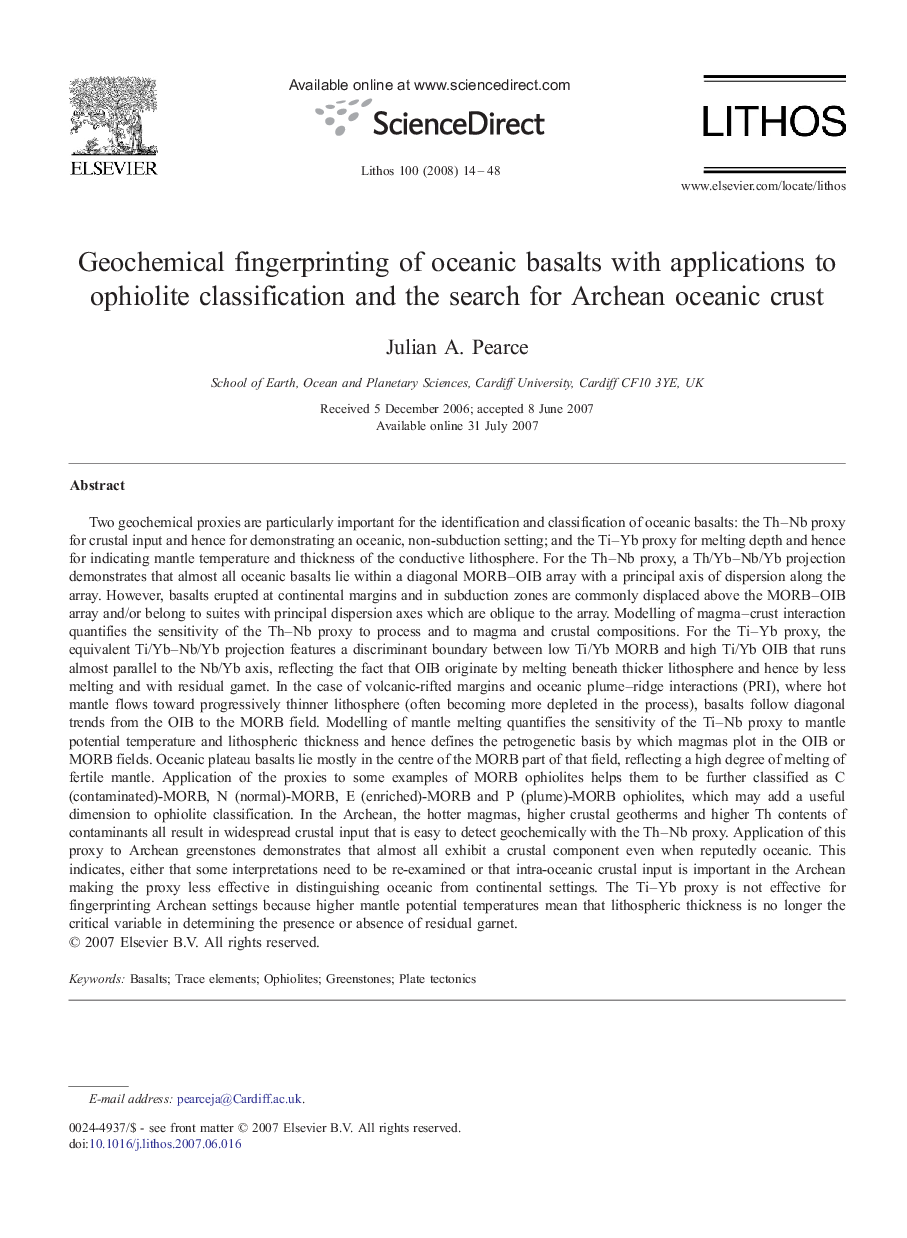| کد مقاله | کد نشریه | سال انتشار | مقاله انگلیسی | نسخه تمام متن |
|---|---|---|---|---|
| 4717661 | 1638761 | 2008 | 35 صفحه PDF | دانلود رایگان |

Two geochemical proxies are particularly important for the identification and classification of oceanic basalts: the Th–Nb proxy for crustal input and hence for demonstrating an oceanic, non-subduction setting; and the Ti–Yb proxy for melting depth and hence for indicating mantle temperature and thickness of the conductive lithosphere. For the Th–Nb proxy, a Th/Yb–Nb/Yb projection demonstrates that almost all oceanic basalts lie within a diagonal MORB–OIB array with a principal axis of dispersion along the array. However, basalts erupted at continental margins and in subduction zones are commonly displaced above the MORB–OIB array and/or belong to suites with principal dispersion axes which are oblique to the array. Modelling of magma–crust interaction quantifies the sensitivity of the Th–Nb proxy to process and to magma and crustal compositions. For the Ti–Yb proxy, the equivalent Ti/Yb–Nb/Yb projection features a discriminant boundary between low Ti/Yb MORB and high Ti/Yb OIB that runs almost parallel to the Nb/Yb axis, reflecting the fact that OIB originate by melting beneath thicker lithosphere and hence by less melting and with residual garnet. In the case of volcanic-rifted margins and oceanic plume–ridge interactions (PRI), where hot mantle flows toward progressively thinner lithosphere (often becoming more depleted in the process), basalts follow diagonal trends from the OIB to the MORB field. Modelling of mantle melting quantifies the sensitivity of the Ti–Nb proxy to mantle potential temperature and lithospheric thickness and hence defines the petrogenetic basis by which magmas plot in the OIB or MORB fields. Oceanic plateau basalts lie mostly in the centre of the MORB part of that field, reflecting a high degree of melting of fertile mantle. Application of the proxies to some examples of MORB ophiolites helps them to be further classified as C (contaminated)-MORB, N (normal)-MORB, E (enriched)-MORB and P (plume)-MORB ophiolites, which may add a useful dimension to ophiolite classification. In the Archean, the hotter magmas, higher crustal geotherms and higher Th contents of contaminants all result in widespread crustal input that is easy to detect geochemically with the Th–Nb proxy. Application of this proxy to Archean greenstones demonstrates that almost all exhibit a crustal component even when reputedly oceanic. This indicates, either that some interpretations need to be re-examined or that intra-oceanic crustal input is important in the Archean making the proxy less effective in distinguishing oceanic from continental settings. The Ti–Yb proxy is not effective for fingerprinting Archean settings because higher mantle potential temperatures mean that lithospheric thickness is no longer the critical variable in determining the presence or absence of residual garnet.
Journal: Lithos - Volume 100, Issues 1–4, January 2008, Pages 14–48